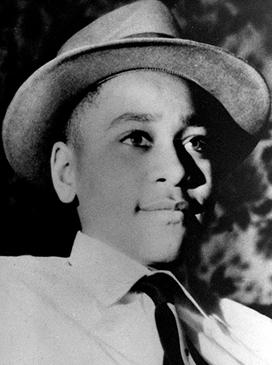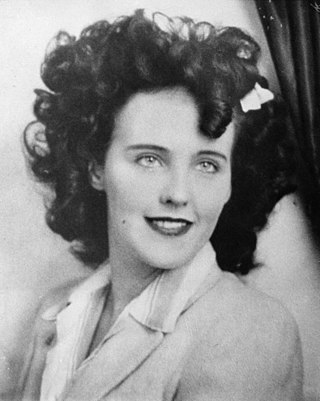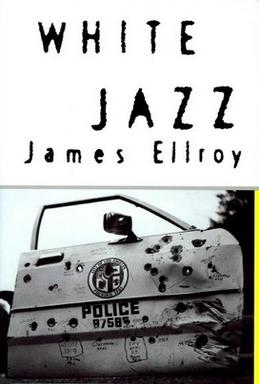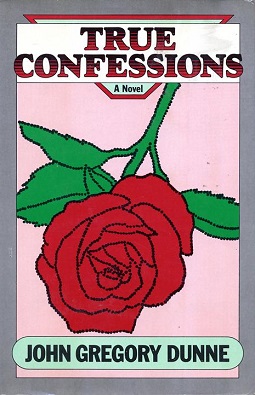Synopsis
In 1946, the Los Angeles Police Department arranges a boxing match between patrolmen Dwight "Bucky" Bleichert and Lee Blanchard as a publicity stunt. The fight is promoted as "Fire versus Ice", reflecting their contrasting boxing styles and personalities. Bucky is cautious and reserved, and racked with guilt over his wartime record, having betrayed two Japanese-American friends (resulting in their internment) and participated in the violent suppression of the Zoot Suit Riots. By contrast, Lee is outgoing and jovial, and already famous for catching the notorious bank robber Bobby De Witt. Lee is openly cohabiting with Kay Lake, De Witt's girlfriend, in violation of LAPD policy.
Bucky and Lee are promoted to plainclothes jobs in the Warrants Division and are subsequently partnered together. Bucky quickly forms a close bond with Lee and Kay, seeing them as a surrogate family. Kay becomes attracted to Bucky and attempts to seduce him, revealing that her relationship with Lee is platonic, but Bucky nevertheless rebuffs her advances in order to avoid upsetting the harmonious friendship between the three of them.
In January 1947, the hideously mutilated body of Elizabeth Short is discovered. The killing, which the press dub "Black Dahlia", reminds Lee of the unsolved disappearance of his younger sister Laurie, prompting him to volunteer himself and Bucky for the team investigating the murder. One of the other detectives on the team, the thuggish Fritz Vogel, is in cahoots with Assistant DA Ellis Loew, who hopes to use the case to launch his political career. He and Vogel repeatedly try to frame innocent men in order to close the case quickly. Bucky is initially resentful of his and Lee's involvement in the case and the attendant media circus, but gradually becomes obsessed with Short as he learns about her chaotic and unhappy life.
One line of enquiry leads Bucky to Madeleine Sprague, a spoiled socialite who closely resembles Short and was also a lesbian lover of hers. In exchange for Bucky suppressing evidence about her involvement with Short, Madeleine has sex with him, causing him to fantasize that she is Short. Bucky meets the rest of Madeleine's family, comprising her tyrannical father Emmett, an amoral property developer; her sickly mother Ramona; and her sister Martha, an aspiring artist. He also learns about George Tilden, an old friend of Emmett's who was badly disfigured in a car crash and subsequently became a reclusive handyman on Emmett's estate.
Lee becomes increasingly agitated; besides being preoccupied with the Short case, he is also worried about De Witt's imminent release from prison. When Bucky finds a pornographic film featuring Short, Lee absconds to Tijuana, ostensibly to track down the man who made the film. Bucky follows and stumbles across the corpse of De Witt, apparently murdered along with Mexican drug trafficker Felix Chasco by corrupt Rurales hired by Lee. Despite De Witt's death, Lee fails to reappear, and Bucky returns to Los Angeles.
Bucky discovers that Vogel has been suppressing evidence in order to hide the fact that Short was hired as a prostitute by his son Johnny shortly before her death. Bucky forces Johnny to confess as much, leading to his being arrested for soliciting, while Vogel commits suicide. Bucky is placed on two weeks' leave and uses the time off to return to Mexico to look for Lee. There, Bucky learns from a San Diego private investigator that Lee was murdered by a Mexican woman, probably Chasco's lover avenging his death. With the PI's help, Bucky finds Lee's body buried on the beach at Ensenada. He returns to L.A. and reveals all to Kay, who in turn reveals that Lee was the real leader of the De Witt gang, and that he turned on his former accomplices in order to stop De Witt's domestic abuse. Bucky is horrified by this revelation, but forgives Lee and marries Kay. He ends his relationship with Madeleine and putting the Dahlia case behind him.
Bucky's superiors punish him for his part in Vogel's downfall by transferring him to the forensics unit, a career dead-end. His initially happy marriage with Kay gradually deteriorates. Two years later, he is assigned to collect evidence surrounding the suicide of Eldridge Chambers, a former friend of Emmett. At Chambers' house, he sees a painting of a grotesque clown with a Glasgow smile, similar to Short's facial mutilations. His interest in the Dahlia case piqued again, Bucky stakes out the Sprague mansion and discovers that Madeleine is frequently making herself up to look like Short and picking up sailors in the same bars which Short once frequented. Bucky confronts Madeleine, who explains that she's been mimicking Short in order to lure Bucky to her, having developed a sexual fixation on him. The two renew their affair, causing Kay to leave Bucky.
During the pageant to celebrate the removal of the last four letters of the "Hollywoodland" sign, a nearby shack is discovered to contain a mattress covered in dried blood. Bucky conducts a forensic examination of the shack and determines that it is the place where Short was tortured and killed. He matches fingerprints at the shack to Tilden and learns that the shack is owned by Emmett.
Bucky confronts Madeleine and Emmett, who are revealed to be lovers, but they explain it is not incestuous as Madeleine is not actually Emmett's daughter but the result of an affair between Ramona and Tilden, for which Emmett got revenge by disfiguring Tilden with a knife. Years later, Madeleine shot the porn film featuring Short in one of Emmett's empty houses, and Tilden witnessed it and became enamoured with Short. He subsequently blackmailed Emmett and Madeleine, threatening to reveal that his disfigurement was the result of Emmett's assault rather than a car crash unless Madeleine arranged for him to go on a date with Short. Moreover, Emmett also reveals that Tilden, the son of an anatomist, has always been obsessed with dead bodies and habitually exhumes corpses in order to collect their organs. Aware that he can't publicly expose Tilden and the Spragues, lest he also be convicted for suppression of evidence, Bucky tracks down Tilden and kills him.
The murder is seemingly solved, but Bucky is bugged by a discrepancy in the case files and goes to speak to Martha Sprague, from whom he discovers that Lee had actually deduced Emmett and Madeleine's involvement in the first few days of the investigation and used this knowledge to blackmail Emmett for $100,000. Bucky is shocked by this revelation, and in particular by the fact that Kay acted as go-between in the deal. He confronts Kay, who is so ashamed that she leaves L.A.
Bucky bumps into Chambers' widow and learns that the clown painting is of a character from the novel The Man Who Laughs . Remembering that a copy of that book was found at the shack where Short was killed, he discovers that Chambers bought the painting from Ramona. Ramona confesses to Bucky that she is the real murderer, having killed Short in Tilden's shack after gatecrashing their date; she persuaded Tilden to go along with it by offering to let him keep Short's organs after the murder. Having modelled her torture of Short upon the novel, she subsequently sold the painting to Chambers "as an act of purging".
While vacillating about whether or not to arrest Ramona, Bucky discovers that Madeleine is again dressing up as Short. Desperate to get his attention, she reveals to Bucky that she, in disguise as a Mexican woman, was the one who murdered Lee, in order to retrieve the $100,000 that he extorted from her father. Bucky arrests her and she is institutionalized; she gets revenge by revealing Bucky's suppression of evidence, causing him to be fired from the LAPD. Bucky doesn't disclose what he knows about Ramona, and the Dahlia case remains officially unsolved. Kay writes to Bucky telling him that she is pregnant, and the two reconcile. The novel ends with Bucky flying out to join Kay, and on the plane, he prays for Short's spirit to watch over him in his new home – Boston, her birthplace.













